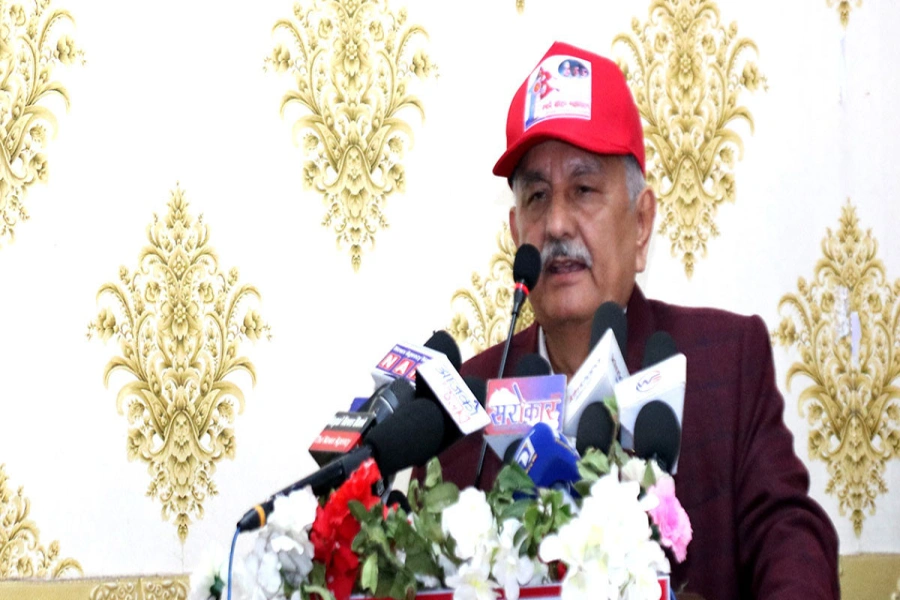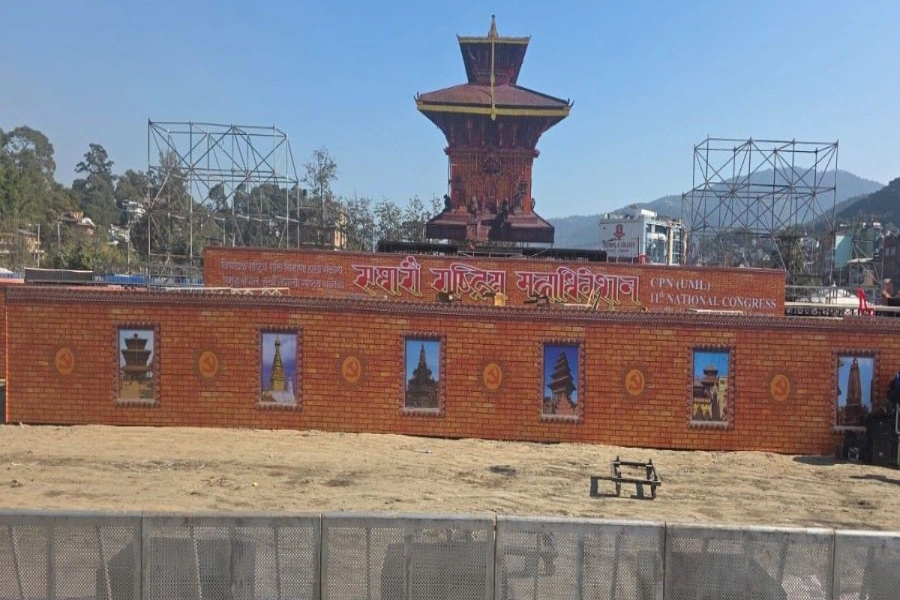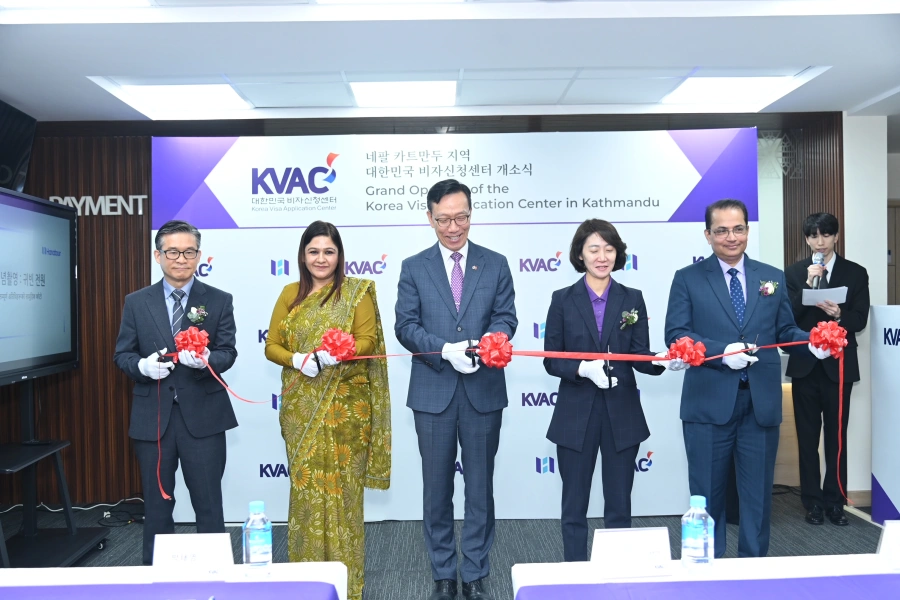Nepal, a buffer state between the two economic giants, India and China, struggles to maintain financial stability. Its strategic location between these two global powerhouses has positioned it at the crossroads of economic activity. Still, it has also exposed the nation to unique challenges that have impacted its macroeconomic landscape. The indicators of Nepal's economic health often paint a picture of a country grappling with macroeconomic issues exacerbated by various internal and external factors. In recent years, Nepal's transformational journey has been marked by destabilizing forces emanating from quarters disinterested in the country's progress. This unsettling dynamic has hindered the nation's efforts to chart a course toward sustainable economic development. A close look at the country's economic indicators reveals a concerning picture amid these complexities.
One of the remarkable challenges Nepal confronts is its heavy reliance on remittances. The recent report from Nepal Rastra Bank (Central Bank of Nepal ) indicates that during the initial seven months of the last fiscal year 2022/23, Nepal experienced a substantial inflow of remittances, amounting to more than Rs 689 billion, which is 27.1 percent more than the previous fiscal year. The remittances sent back by Nepali workers employed abroad form a critical pillar of the country's foreign exchange earnings. While this inflow provides a vital lifeline to countless households and bolsters the economy, it exposes Nepal to vulnerabilities. Over-dependence on remittances makes the economy susceptible to fluctuations in the global job market or economic downturns in host countries, leaving the nation exposed. Nepal's ongoing struggle to embrace technological advancements remains evident. Nepal's specialized policies lag while the global technology landscape continues to expand. More financial and technical support has hindered the growth of domestic technology initiatives. As a result, Nepal's skilled workforce frequently seeks opportunities abroad. The lack of trust in local technological capabilities and a need for investment banks supporting tech-focused businesses compound the challenges impeding technological progress within the country. Nepal's ongoing struggle to embrace technological advancements remains evident. While the global technology landscape continues expanding, Nepal's specialized policies must catch up. More financial and technical support has hindered the growth of domestic technology initiatives. As a result, Nepal's skilled workforce frequently seeks opportunities abroad. The lack of trust in local technological capabilities and a need for investment banks supporting tech-focused businesses compound the challenges impeding technological progress within the country.
The recent projection of the International Monetary Fund (IMF) identified that Nepal has a modest 4.4% change in the country’s real GDP. While growth is positive, this rate underscores the country's uphill battle in fostering meaningful economic expansion. Its challenges have implications that ripple beyond the economic sphere, impacting social welfare, political stability, and the overall development trajectory. Nepal's struggle with low economic growth is a stark reality. The pace of its economic expansion has lagged behind its regional counterparts, a fact attributed to various issues. Political instability has periodically disrupted policy continuity and investor confidence. Insufficient infrastructure and inadequate foreign investment have hampered the nation's ability to tap into its economic potential fully. The lack of diversification beyond the predominant agrarian sector further inhibits sustained growth.
Nepal-China Relations: A Perspective

The trade imbalance poses yet another hurdle to Nepal's economic equilibrium. In April 2023, Nepal's Current Account recorded a deficit of USD 170.0 million, marking a notable shift from the previous quarter's surplus of USD 36.6 million. A pattern where imports consistently surpass exports puts immense pressure on foreign exchange reserves and the overall balance of payments. This imbalance necessitates addressing structural issues to enhance export capacity and reduce import dependency. Strengthening domestic industries and value-added production are crucial in this endeavor.
Roadmap to overcome economic challenges
Specific transformative actions have the potential to reshape Nepal's strategic economic trajectory. Central to this evolution is the imperative to embrace progressive economic goals by adopting high-level policies and their practical implementation. The key to catalyzing this change is establishing high-quality infrastructure that attracts foreign direct investment (FDI) and fosters a conducive environment for foreign capital infusion. Such an infusion of foreign currency can alleviate unemployment and spearhead job creation initiatives, significantly contributing to Nepal's economic resurgence. A decisive facet of this transformation hinges on Nepal's capacity to harness the dividends of modernization. Therefore, it becomes crucial for Nepal to direct its attention towards nurturing advanced economic practices, aligning itself with global trends, and propelling the nation forward on a sustainable growth trajectory. Embracing cutting-edge policies can expedite this transition, revamping the economic landscape and paving the way for a prosperous future.
Strategically positioning the nation to partake in the global economy necessitates emphasizing research and development (R&D). Here, universities play a pivotal role as innovation and knowledge creation conduits. By channeling investments into research centers and educational institutions, Nepal can galvanize its R&D efforts, thereby fostering indigenous expertise and pioneering solutions that address domestic economic challenges. This synergy between academia and economic development can catalyze transformative change, enabling Nepal to take its place among innovation-driven economies.
The twin pillars of political stability and economic equilibrium are indispensable. A harmonious and stable political environment is the foundation of robust economic progress. Instability can erode investor confidence and hinder long-term planning. As Nepal aims to rewrite its economic narrative, prioritizing political stability becomes paramount, laying the groundwork for sustained economic advancement.
Furthermore, Nepal's diaspora constitutes a significant resource through remittances, which have the potential to be harnessed effectively to establish a base for domestic manufacturing. The judicious utilization of remittance inflows can create a stable economic foundation, diminishing the nation's reliance on imported goods and encouraging local production. By directing these funds into strategic industries, Nepal can foster self-sufficiency and promote economic diversification, reducing vulnerabilities associated with external shocks. In pursuing strategic economic development, creating an enabling environment for foreign investment is a linchpin. High-quality infrastructure, underpinned by modern logistics and efficient transportation networks, attracts FDI and elevates Nepal's competitive edge on the global stage. This symphony of elements aligns with a vision of robust economic growth, positioning Nepal as an alluring investment destination.
To conclude, Nepal's journey towards strategic economic development hinges on a constellation of factors working in concert. By embracing progressive policies, investing in R&D, prioritizing political stability, and harnessing remittance potential, Nepal can chart a new trajectory toward sustainable prosperity. This transformation, underpinned by a commitment to innovation, infrastructure development, and prudent resource utilization, can reshape the nation's economic landscape, propelling it toward a brighter future.







































